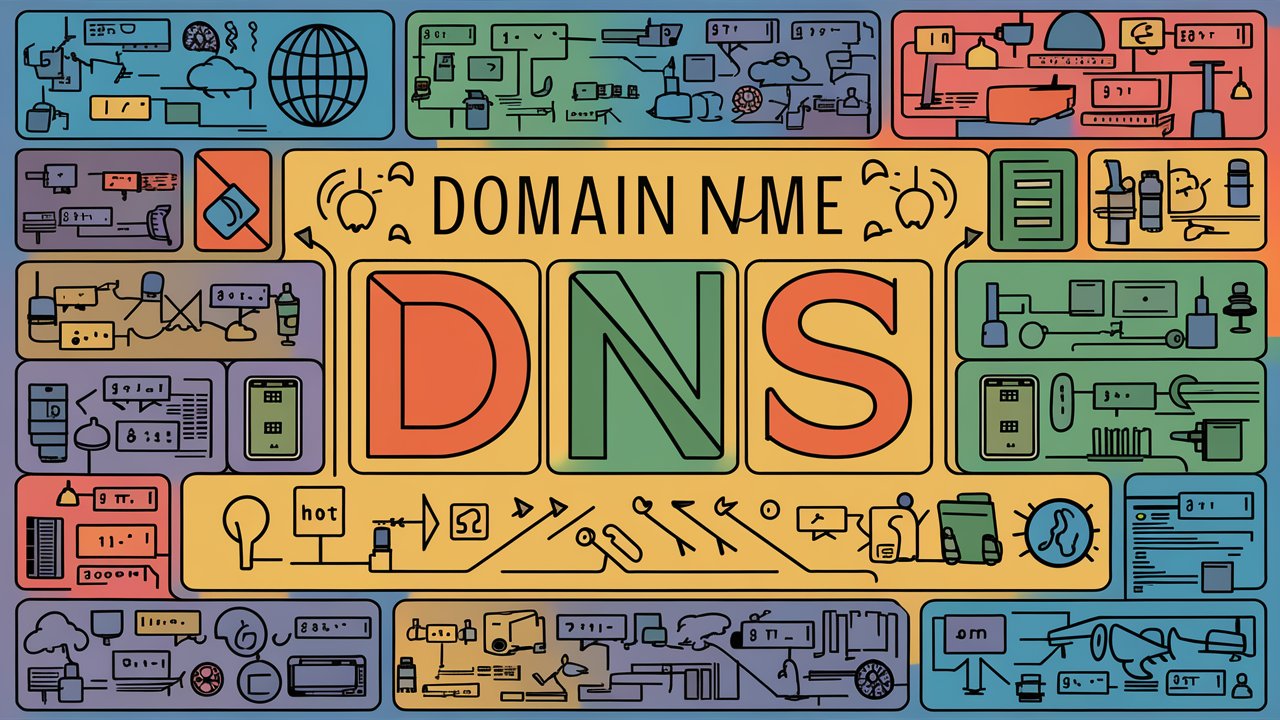The Basics of DNS: Understanding the Internet's Directory Service
 Aaditya Kediyal
Aaditya Kediyal
The Domain Name System (DNS) is an essential part of the internet that you interact with every day, often without even realizing it. It's the system that translates human-friendly domain names like www.example.com into IP addresses like 192.0.2.1 that computers use to communicate with each other. Think of DNS as the internet’s phonebook, helping you connect to websites and services effortlessly. In this blog, we’ll explore what DNS is, how it works, and why it’s so crucial. We’ll also dive into some technical details with examples and configurations.
Table of Contents
1. What is DNS?
DNS stands for Domain Name System. It's a hierarchical and decentralized system used to translate domain names into IP addresses. DNS makes the internet user-friendly by allowing you to use memorable domain names instead of complex numerical IP addresses.
How DNS is Structured
DNS is organized in a hierarchy:
Root Level: The topmost level, containing root servers that store information about top-level domains (TLDs).
Top-Level Domains (TLDs): Includes familiar extensions like
.com,.org, and.net, as well as country-specific TLDs like.ukand.jp.Second-Level Domains: The domain names directly under TLDs, like
exampleinexample.com.Subdomains: Additional subdivisions, like
wwwinwww.example.com.
2. How DNS Works
When you enter a URL in your browser, DNS translates that URL into an IP address so your computer can access the website. This process involves multiple steps and different types of DNS servers.
DNS Resolution Process
DNS Query Initiation: You type a URL into your browser, which sends a DNS query to the local DNS resolver.
Query to Recursive Resolver: The local DNS resolver, usually provided by your ISP, checks its cache for the IP address. If it doesn’t find it, it queries a recursive resolver.
Recursive Querying: The recursive resolver queries root servers, TLD servers, and authoritative DNS servers in sequence to find the IP address.
Response: Once the IP address is found, it’s returned to the local DNS resolver, which then sends it to your browser, allowing access to the website.
Types of DNS Servers
Root Name Servers: The first stop in the DNS translation process, handling requests for TLDs.
TLD Name Servers: Store information about domains within specific TLDs.
Authoritative Name Servers: Provide responses to queries about domains they manage.
3. DNS Records
DNS records store information about domain names and their corresponding IP addresses. Here are some common types of DNS records:
A Record: Maps a domain name to an IPv4 address.
AAAA Record: Maps a domain name to an IPv6 address.
CNAME Record: Maps a domain name to another domain name (canonical name).
MX Record: Specifies mail servers for a domain.
TXT Record: Stores text information, often used for verification and email security (e.g., SPF, DKIM).
For example, here are some DNS records for example.com:
example.com. 3600 IN A 93.184.216.34
example.com. 3600 IN AAAA 2606:2800:220:1:248:1893:25c8:1946
www.example.com. 3600 IN CNAME example.com.
example.com. 3600 IN MX 10 mail.example.com.
example.com. 3600 IN TXT "v=spf1 include:_spf.example.com ~all"
4. Setting Up DNS
Setting up DNS for your domain involves configuring DNS records and making sure your DNS server can handle queries correctly.
DNS Configuration Files
On Unix-like systems, DNS configurations are typically found in /etc/named.conf (for BIND, a popular DNS server software). Here’s a basic example:
options {
directory "/var/named";
forwarders {
8.8.8.8; // Google DNS
8.8.4.4; // Google DNS
};
};
zone "example.com" IN {
type master;
file "example.com.zone";
};
zone "." IN {
type hint;
file "named.ca";
};
The example.com.zone file might look like this:
$TTL 86400
@ IN SOA ns1.example.com. admin.example.com. (
2024010101 ; Serial
3600 ; Refresh
1800 ; Retry
1209600 ; Expire
86400 ) ; Minimum TTL
@ IN NS ns1.example.com.
@ IN NS ns2.example.com.
@ IN A 93.184.216.34
@ IN AAAA 2606:2800:220:1:248:1893:25c8:1946
www IN CNAME example.com.
mail IN MX 10 mail.example.com.
DNS Query Example
To query DNS records, you can use tools like dig or nslookup. Here’s an example using dig:
dig example.com
This command outputs something like this:
; <<>> DiG 9.16.1-Ubuntu <<>> example.com
;; global options: +cmd
;; Got answer:
;; ->>HEADER<<- opcode: QUERY, status: NOERROR, id: 12345
;; flags: qr rd ra; QUERY: 1, ANSWER: 1, AUTHORITY: 2, ADDITIONAL: 3
;; QUESTION SECTION:
;example.com. IN A
;; ANSWER SECTION:
example.com. 3600 IN A 93.184.216.34
;; AUTHORITY SECTION:
example.com. 3600 IN NS ns1.example.com.
example.com. 3600 IN NS ns2.example.com.
;; ADDITIONAL SECTION:
ns1.example.com. 3600 IN A 192.0.2.1
ns2.example.com. 3600 IN A 192.0.2.2
;; Query time: 54 msec
;; SERVER: 192.168.1.1#53(192.168.1.1)
;; WHEN: Wed Jun 15 16:20:55 UTC 2024
;; MSG SIZE rcvd: 117
5. Security Considerations
DNS is critical to internet functionality, making it a target for various attacks. Key security considerations include:
DNS Cache Poisoning: An attacker introduces corrupt DNS data into the cache of a resolver, redirecting traffic to malicious sites.
DNSSEC: DNS Security Extensions add cryptographic signatures to DNS data, ensuring data integrity and authenticity.
DDoS Attacks: Distributed Denial of Service attacks can overwhelm DNS servers with traffic, making DNS resolution slow or impossible.
6. Conclusion
The Domain Name System is a vital technology that makes the internet accessible and user-friendly. By translating domain names into IP addresses, DNS enables seamless browsing and communication. Understanding how DNS works, its structure, and its configuration is crucial for web developers, network administrators, and cybersecurity professionals.
We've covered the basics of DNS, including its hierarchical structure, the resolution process, and various record types. We've also looked at setting up DNS and some important security considerations. With this knowledge, you're well-equipped to delve deeper into DNS and apply it in your projects and networks.
Subscribe to my newsletter
Read articles from Aaditya Kediyal directly inside your inbox. Subscribe to the newsletter, and don't miss out.
Written by

Aaditya Kediyal
Aaditya Kediyal
I am Developer from Delhi, India and my domain of expertise lies in Full-Stack Development . I am currently learning Devops and sharing my journey one day at a time. In future I'll be definitely moving to WEB 3.0 , Blockchain technology and Web RTC. Hopefully i will be contributing in future as well.